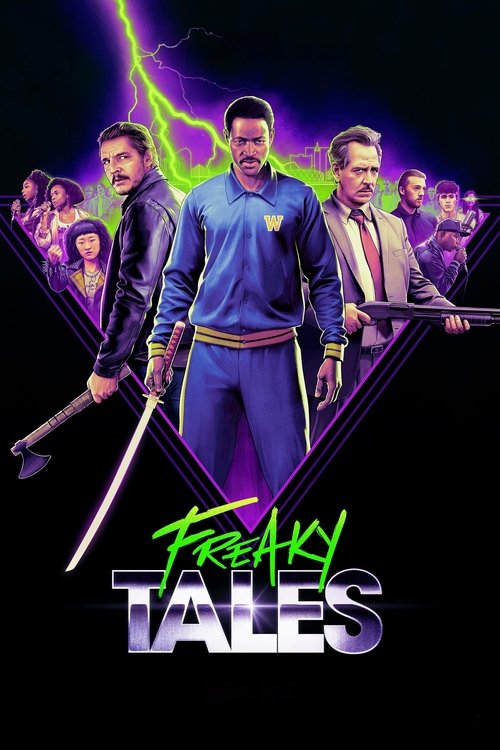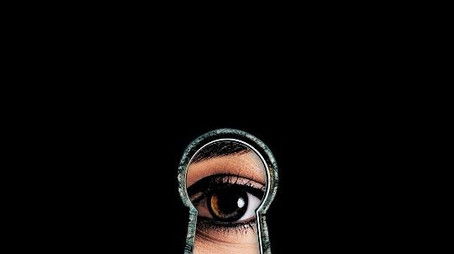
Ask Your Own Question
What is the plot?
Sorry, we aren't able to watch and write up a full detailed plot yet. Check back in a few days.
What is the ending?
The movie Freaky Tales (2025) ends with all the main characters uniting to confront the neo-Nazi threat in Oakland. Sleepy Floyd uses his supernatural powers to kill the gang's leader, and Clint reunites with his child, symbolizing hope and redemption. The film closes on a note of community and resistance without any post-credits scenes.
Expanding on the ending scene by scene: The final chapter brings together the disparate storylines and characters introduced earlier. After the punk community at 924 Gilman Street successfully defends against Nazi skinheads with a fierce, weaponized fight, and the rap duo Barbie and Entice assert their strength on stage, the narrative shifts to Clint, a debt collector played by Pedro Pascal. Clint's desire to retire and settle down with his pregnant wife is violently disrupted by echoes from his past.
The climax unfolds as Sleepy Floyd, portrayed by Jay Ellis, unleashes a brutal and bloody vengeance against a corrupt cop and his henchmen. His combat is intense and graphic, involving swords, knives, and supernatural abilities reminiscent of "the Force." He kills dozens of enemies in a series of violent encounters, including decapitations, dismemberments, and explosive bloodshed.
In the final confrontation, Sleepy Floyd's supernatural power leads to the death of the neo-Nazi gang leader. Meanwhile, Clint's storyline resolves with a heartfelt reunion with his child, symbolizing personal redemption and hope for the future. The film ends with the characters coming together, emphasizing themes of solidarity, resistance against hate, and the strength found in community.
The closing moments do not include any post-credits scenes but feature a blooper reel and a vintage breakdancing sequence during the credits, adding a playful and nostalgic touch to the film's conclusion.
Is there a post-credit scene?
The movie Freaky Tales (2025) does not have a post-credits scene. Instead, the credits feature a blooper reel and a vintage breakdancing sequence, which add a playful and nostalgic touch to the film's ending.
What are the main themes explored in the different stories of Freaky Tales?
Freaky Tales explores themes such as community resistance against hate (neo-Nazi attacks on punk fans), the struggle and empowerment of aspiring female rappers facing misogyny, the emotional stakes of a debt collector trying to settle down, and vengeance against corruption and violence, all set in 1987 Oakland.
How are the four stories in Freaky Tales interconnected?
The four stories are loosely interconnected by their setting in 1987 Oakland, California, and by overlapping events such as the neo-Nazi harassment at the Grand Lake Theatre and the local music scenes, including punk rock and rap. Characters and locations appear across the segments, creating a mosaic of Oakland's subcultures and social tensions.
What role does music play in the narrative of Freaky Tales?
Music is central to Freaky Tales, with the punk rock scene depicted in the first story, including a show at 924 Gilman Street, and the rap scene in the second story featuring aspiring rappers Barbie and Entice performing alongside Too $hort. Music scenes serve as both cultural backdrops and battlegrounds for the characters' struggles and expressions of identity.
How is violence portrayed in Freaky Tales, especially in relation to the neo-Nazi antagonists?
Violence in Freaky Tales is graphic and stylized, particularly in the confrontations with neo-Nazi skinheads who attack punk fans and music venues. The punk community organizes armed resistance, resulting in over-the-top fight scenes with exaggerated blood and gore. Later, a character named Sleepy Floyd unleashes brutal vengeance with swords and knives, emphasizing a hyper-violent tone.
What is the significance of the magical green light seen in the film?
The magical green light appears as a symbolic or supernatural element during moments of empowerment. For example, Tina's spiked bracelet emits a green light when fighting Nazis, and Barbie and Entice's microphone glows green during their rap performance, highlighting their strength and resilience in the face of adversity.
Is this family friendly?
The movie "Freaky Tales" (2025) is not family friendly and is rated R due to strong bloody violence, frequent strong language including racial and homophobic slurs, sexual content, and drug use. It is best suited for mature teens aged 16 and older and adults who can handle graphic and intense content.
Potentially objectionable or upsetting scenes for children or sensitive viewers include graphic physical violence such as stabbings, gunfights, visible blood and injuries, a man performing oral sex on a woman, sexual situations without explicit nudity, and drug use. The film also contains offensive language and slurs used in a historical context, as well as scenes involving violent confrontations with neo-Nazi groups. Additionally, there are scenes of people being killed with a sword, a man exploding, a head being lopped off, and a hand driven through a victim's chest.
Given these elements, the film contains mature themes and intense action that are not appropriate for younger viewers or those sensitive to violence, sexual content, or strong language.
Does the dog die?
In the 2025 film Freaky Tales, there is no indication or mention that a dog dies. The available plot summaries and reviews focus on human characters, punk and rap scenes, and violent confrontations with Nazis, but do not reference any dog or its fate. Additionally, the site DoesTheDogDie.com, which tracks animal deaths in movies, lists Freaky Tales (2024/2025) but does not report a dog death in this film. Therefore, based on the current information, no dog dies in Freaky Tales.
























































